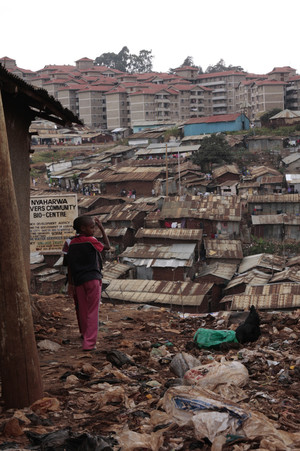Kenya: MDGs Remain a Pipe Dream
By Arianna Azzolini
 Ten years have gone by since the United Nations issued the Millennium Declaration, worldwide pact based on the nation's mutual duty to build a fair world for everyone.
Ten years have gone by since the United Nations issued the Millennium Declaration, worldwide pact based on the nation's mutual duty to build a fair world for everyone.
With only five years left to the deadline, the UN Secretary-General Ban Ki-moon has called on world leaders to attend a summit in New York on 20-22 September 2010.
“Our challenge today is to agree on an action agenda to achieve the MDGs.” Ban Ki-moon stated.
Thanks to the slum upgrading programme in Kibera, the living conditions in sub-Saharan Africa’s largest slum settlement have somewhat improved, only that the project did not reach the intended beneficiaries.
The programme foresees 150,000 new apartments per year in which the people currently living in tiny dilapidated hovels are supposed to move. According to the plan, 30,000 new houses are to be constructed every year in Kibera. The three- bedroomed self-contained flats sit proudly on a hill overlooking the slums and have electricity and water connections.
The rooms are shared between three families, each paying a monthly rent equivalent to 10 euros. Still, 10 euros is way beyond the reach of most slum dwellers, who live on less than a dollar a day. Consequently, the poor are not the ones benefiting from this project. Cars parked inside these compounds are a clear testimony that the people occupying these houses are not needy.
The rural-urban migration has seen a steady growth of those coming to the slums. But the country’s new constitution could be a first attempt at solving this problem as it provides for devolution of resources.
However, reducing by half the number of people living on less than a dollar a day by 2015 remains a tall order.
"The rich become more rich and the poor more poor. In Kenya, there is no middle class", claims Amani Salim, a Nubian resident in Kibera slums and who has been involved in many development projects. "More than a million euros is given every year for development projects, but at the end of the day, only 10 percent reaches the intended beneficiaries after passing through the goverment, politicians and NGOs", says Amani.
Also, achieving the goal of universal primary education looks like a mirage in Nairobi's slums where the street children are more than 10,000. To ensure every child, male and female, the right to finish a complete cycle of education will be the challenge in the next decades but it will not be reached in the next five years.
Young girls from poor backgrounds engage in prostitution with clients from up market suburbs after dropping out of school.
"The problem is that the people wishing to change the lives of those living in the slums, do not know anything about what goes on there. There is still a long way to walk", Amani stated.



